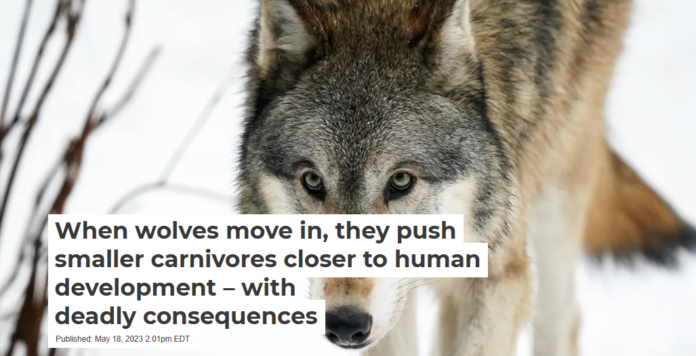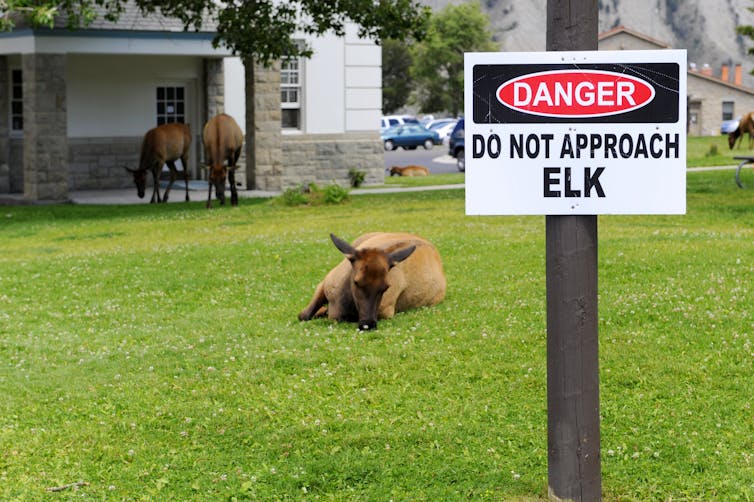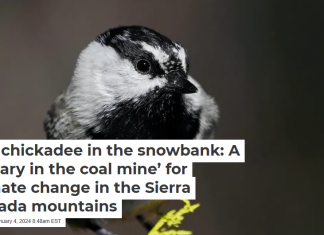

Calum Cunningham, University of Washington and Laura Prugh, University of Washington
Large carnivores like wolves are returning to areas they used to occupy, leading scientists to wonder whether they may once again fulfill important ecological roles. But wolves’ return to the landscape can affect other nearby animals in complex ways.
Our research, published in the journal Science, shows that an increase in predators can lead smaller carnivores, like coyotes and bobcats, to seek refuge near people – but humans then kill them at even higher rates than large predators do.
We are wildlife ecologists who study how predators shape ecosystems. Along with colleagues from the Washington Predator Prey Project and the Spokane Tribe of Indians, we are seeking to understand how recoveries of wolves and other predators are altering ecosystems in Washington state.
Predators structure ecosystems
Large carnivores play crucial roles in their ecosystems. As they prey on or push other animals to avoid the areas they frequently use, predators shape the way interconnected food webs work.
The iconic reintroduction of wolves to Yellowstone National Park in 1995 had cascading effects down the food chain. The elk population shrank, and those that remained avoided areas with wolves, termed a “landscape of fear.” These changes in elk abundance and behavior allowed aspen and willow trees to recover after decades of overconsumption by elk.
Wolves also kill smaller predators like coyotes, providing respite for the animals that coyotes eat. Research from Yellowstone suggests that landscapes with wolves may have more diverse vegetation and more small animals like songbirds than those without wolves.
But because humans are often intolerant of predators and kill them at high rates, large predators tend to avoid areas that are frequented by people. In national parks where humans rarely kill wildlife, some prey species use areas popular with people, such as hiking trails and campgrounds, as refuges from predators. This is known as the “human shield” effect.

Predators in human-dominated landscapes
Three decades after the Yellowstone release, wolves have continued to recolonize vast areas of the American West. In 2008, after an 80-year absence, wolves – some of which descended from the original Yellowstone population – began to naturally recolonize Washington. These wolves moved in from neighboring populations in Idaho and British Columbia.
But unlike Yellowstone, many of the landscapes wolves are now returning to are heavily modified by humans. This level of development raises the question: Do predators have the same influence on ecosystems where humans, rather than wolves, are the top dogs? https://www.youtube.com/embed/-qJKWp1ggio?wmode=transparent&start=0 The Washington Predator Prey Project examines the ecological effects of wolf recovery in Washington state. Video produced by Benjamin Drummond and Sarah Joy Steele.
To answer this question, we used GPS collars to track the movements of 22 wolves, 60 cougars, 35 coyotes and 37 bobcats as they navigated the landscapes of northern Washington, comprising a patchwork of public forests and land used for agriculture, ranching, logging and residential development.
Using hundreds of thousands of GPS locations, we constructed statistical models to reveal how coyotes and bobcats navigated a landscape where humans, wolves and cougars all posed concurrent threats. The GPS collars also notified us when coyotes and bobcats died, allowing us to investigate what caused their deaths. https://www.youtube.com/embed/V9q2txY_FNY?wmode=transparent&start=0 How researchers from the Washington Department of Fish and Wildlife attach GPS collars to wolves. Video produced by Benjamin Drummond and Sarah Joy Steele.
When ‘human shields’ are lethal
We found that wolves and cougars avoided areas heavily influenced by humans, such as busy roads and residential areas. Coyotes strongly avoided wolves, which brought them closer to humans. In parts of the landscape with large predators around, both coyotes and bobcats moved to areas with approximately double the human influence, potentially using humans as shields.
When coyotes and bobcats sought refuge near people, they instead encountered a more lethal source of danger. We found that humans were the greatest cause of mortality, killing these smaller predators at more than three times the rate that large carnivores did.
Our findings fit with earlier research that characterizes humans as “super predators.” People use modern technologies such as firearms and steel traps to kill small predators at far higher rates than other predators kill small predators. Unlike other predators, humans often target animals in prime condition.
But if people are so dangerous, why would coyotes and bobcats seek refuge near them? Other research shows that smaller predators do indeed fear humans, so they likely still recognize that humans are dangerous. Instead, we think they might not correctly interpret the threats posed by modern humans.
Most bobcats and coyotes in our study were either shot or trapped. These technologies allow people to kill animals either when absent or from large distances, possibly making it difficult for animals to accurately gauge risk.
Additionally, lenient hunting regulations for these small predators puts them at high risk. Under a Washington hunting license, for example, coyotes and bobcats can be legally hunted and trapped without limits – all year for coyotes and six months for bobcats. https://www.youtube.com/embed/fYPCD6yKNHs?wmode=transparent&start=0 The process of capturing and GPS-collaring a bobcat. After being sedated, it is common for animals to initially wake up groggy, but they soon return to normal.
Conservation in human-dominated landscapes
While our findings may at first seem like bad news for conserving smaller predators, these results have important implications for maintaining balanced ecosystems, where no species is too abundant. Unbalanced ecosystems, like ones with too many small predators, can face devastating effects. In Australia, for example, overabundant cats and foxes have contributed to the extinctions of about 30 small mammal species.
Our results show that larger predators can constrain the behavior of smaller predators in human-dominated landscapes, which may help to prevent overabundance.
Rewilding ecosystems by using large predators to reestablish missing ecological processes may provide a way to maintain balanced ecosystems. As wolf populations continue to recover in large parts of the U.S. and Europe, our findings suggest that they are reestablishing important ecological processes by recreating these landscapes of fear that have long been missing.
Calum Cunningham, Postdoctoral Researcher, University of Washington and Laura Prugh, Associate Professor of Quantitative Wildlife Sciences, University of Washington
This article is republished from The Conversation under a Creative Commons license. Read the original article.



















